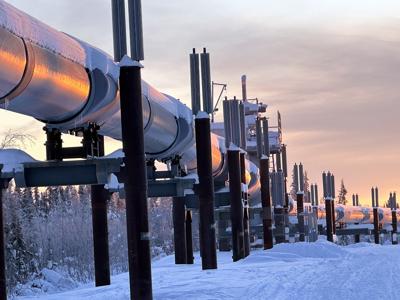As the Alaskan who leads the board of the Alaska Gasline Development Corporation (AGDC), I write to provide a frank update about the Alaska LNG Project, which has been in the news a lot lately — AGDC signed a deal with Glenfarne to take over the project; President Trump and our Congressional delegation vocally support Alaska LNG; and markets in Asia have increased interested in buying Alaska’s natural gas.
Alaska LNG is a big, expensive and complex project. Many Alaskans don’t realize just how big. Alaska LNG’s latest cost estimate, at the end of 2023, is $44 billion. In comparison, Alaska’s annual state budget is about $13 billion.
Alaskans have been hearing about natural gas projects for decades because North Slope natural gas resource is too valuable to ignore. Thankfully, Alaskans have never given up on trying to solve the puzzle. What is different about Alaska LNG now?
First, we have major permits in hand. These permits represent more than a piece of paper. Permitting Alaska LNG took approximately five years and more than $100,000 million in engineering and environmental design. The State of Alaska largely bore the costs of this permitting. Both President Trump and President Biden gave Alaska LNG an environmental stamp of approval. Because permitting is such an expensive process with uncertain outcomes, completed permits substantially derisk Alaska LNG. They include a definitive project development timeline. LNG buyers take us more seriously because of our permits and they helped give Glenfarne the confidence that Alaska LNG stands up to scrutiny.
Second, Alaskans face a major Cook Inlet energy shortfall. We may need to rely on imports temporarily until the pipeline opens, but Alaska LNG is the only option that meets three vital energy criteria: quantity, affordability and reliability. Renewables can help, but honest experts will tell you that there is no practical replacement for the energy foundation provided by natural gas and one won’t be available for decades. Locking into long-term imports means doubling our energy bills for perpetuity and forgoing substantial in-state economic growth.
Third, Alaska LNG has been determined to be economically viable. No additional feasibility studies are required for private investment. Wood Mackenzie found that Alaska LNG can deliver LNG to Asia at prices lower than competing U.S. Gulf Coast projects. They determined that the pipeline can be economically self-supporting, even when the added cost of the lateral to Fairbanks and various North Slope gas supply options are considered. Critics often question Alaska LNG’s upfront costs, higher than other projects due to the pipeline, but our ongoing running costs are a lot lower than other projects because of our short shipping distance to Asia, about 75% shorter than Gulf Coast projects. North Slope gas will be cheaper than other sources because it is stranded with no means to get it to market, and it avoids the rampant price volatility characteristic of Lower 48 natural gas.
Fourth, Alaska LNG benefits from robust federal support. Our congressional delegation authored legislation signed by President Biden that makes Alaska LNG eligible for approximately $30 billion in federal loan guarantees. These loan guarantees greatly reduce borrowing costs, back project debt with the full faith and credit of the United States, lower project risk, and make Alaska LNG even more competitive in global markets. President Trump has made Alaska LNG a centerpiece of his second term through his executive orders and a focus of the new National Energy Dominance Council to use the full force of the federal government, including defense, trade and commerce tools, to support Glenfarne’s work to propel Alaska LNG forward.
I promised you straight talk about Alaska LNG and here is the basic truth: There is still a lot of work to be done, and it will not be easy. Success is not guaranteed. But that also does not mean that we can dismiss or discount the major progress that has been made.
Alaska LNG is built on the shoulders of previous efforts that fell short and benefits from insights gained along the way. The state has made a substantial investment in Alaska LNG — hundreds of millions of dollars — and we have reached a point where Glenfarne, a qualified private developer, will bear the costs and the risks going forward. Although policy makers will have the option for Alaska to invest in the construction of Alaska LNG, there is no further obligation to the state, which is now positioned to realize the billions of dollars of energy security, economic, employment and environmental benefits this project holds without any further material investment.
And although AGDC has passed the baton of project development to Glenfarne, the work of AGDC board members representing the state and protecting Alaska stakeholders continues. This project holds the potential to blaze a new path of prosperity for generations of Alaskans and has brought us closer than any previous effort. We’re not yet at the finish line, but our work continues with energy and optimism.
As your neighbors and fellow Alaskans, we carry your interests in every decision we make and promise to keep you updated about the important work ahead.
Warren Christian lives in Fairbanks and is the chair of the Alaska Gasline Development Corporation board. He has more than 30 years of experience in Alaska construction, oil field services and pipeline industries.












